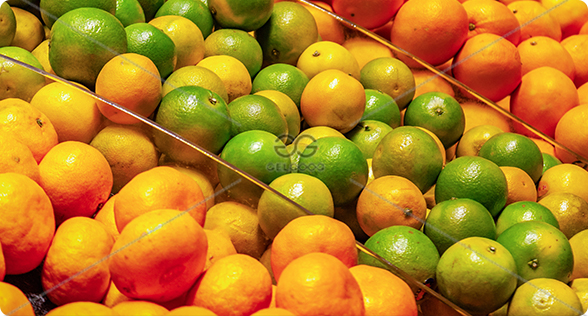Waxing is a common fruit preservation technique widely used for a variety of fruits, such as apples and citrus. Its main purpose is to extend the shelf life of fruits, maintain their fresh appearance, and reduce losses during transportation. This article will introduce the fruit waxing process.

1. Principles of Fruit Waxing
Prevents water loss: A layer of wax naturally exists on the surface of fruits that prevents water from evaporating too quickly. However, this natural wax layer may be removed during washing and handling. Artificial waxing can extend the shelf life of fruits by forming a new protective film on the surface of the fruit and reducing water loss.
Isolation from external contaminants: Fruits may be exposed to a variety of microorganisms and contaminants after picking. Waxing creates a barrier on the surface of the fruit that prevents microorganisms and contaminants from intruding, keeping the fruit clean and hygienic.
Increased luster: Waxed fruits have a smooth surface with better luster, which makes them more attractive in the market, thus increasing their sales value.
2. Fruit Waxing Process
The process of waxing fruit usually involves the following steps: washing, air drying and waxing.
Step 1: Fruit Cleaning. Cleaning is the first step in the waxing process and is designed to remove dust, soil and pesticide residues from the surface of the fruit. The washing process is usually carried out with water or water containing a small amount of detergent, and sometimes ultrasonic cleaning technology is also used to improve the cleaning effect. After washing, the fruit needs to be rinsed to ensure that the detergent is completely removed to avoid affecting the subsequent waxing results.
Step 2: Air drying. Before waxing, the fruit must be completely dry. Otherwise, the moisture on the surface of the fruit will affect the adhesion of the wax, resulting in poor waxing effect. Air-drying process is usually done by mechanical air-drying equipment, which evaporates the water on the surface of the fruit quickly by blowing the wind.
Step 3: Waxing is the most crucial step in the whole process. Common waxing methods include spraying and dipping:
Spraying method: The wax is made into liquid and evenly sprayed on the surface of the fruit through a nozzle. This method is highly efficient and suitable for mass production.
Dipping method: Fruits are immersed in the wax liquid, so that the surface is evenly covered with a layer of wax film. This method is easy to operate but time-consuming and suitable for small-scale treatment.
Step 4: After waxing, the fruit needs to be cooled to allow the wax layer to solidify and form a strong protective film. After cooling, the fruit is ready to be graded and packaged for transportation and sale.
3. The Do's and Don'ts of Waxed Fruits
Choose food grade wax: Make sure you are using food grade safe wax that meets the relevant food safety standards.
Control the thickness of the wax layer: the wax layer should not be too thick so as not to affect the breathing and taste of the fruit. A proper thickness of the wax layer can guarantee the preservation effect without affecting the quality of the fruits.
Wax composition needs to be confirmed before washing: Consumers can soak waxed fruits in warm water for a few minutes to remove the wax layer on the surface before consuming them, especially those who are sensitive to wax or concerned about wax composition.